This post may contain affiliate links. Please read our disclosure policy.
How to make natural purple food powder as either ube powder or purple sweet potato powder/ purple yam powder. Once prepared, this powder can be stored for months and used as purple food coloring or rehydrated for later use!
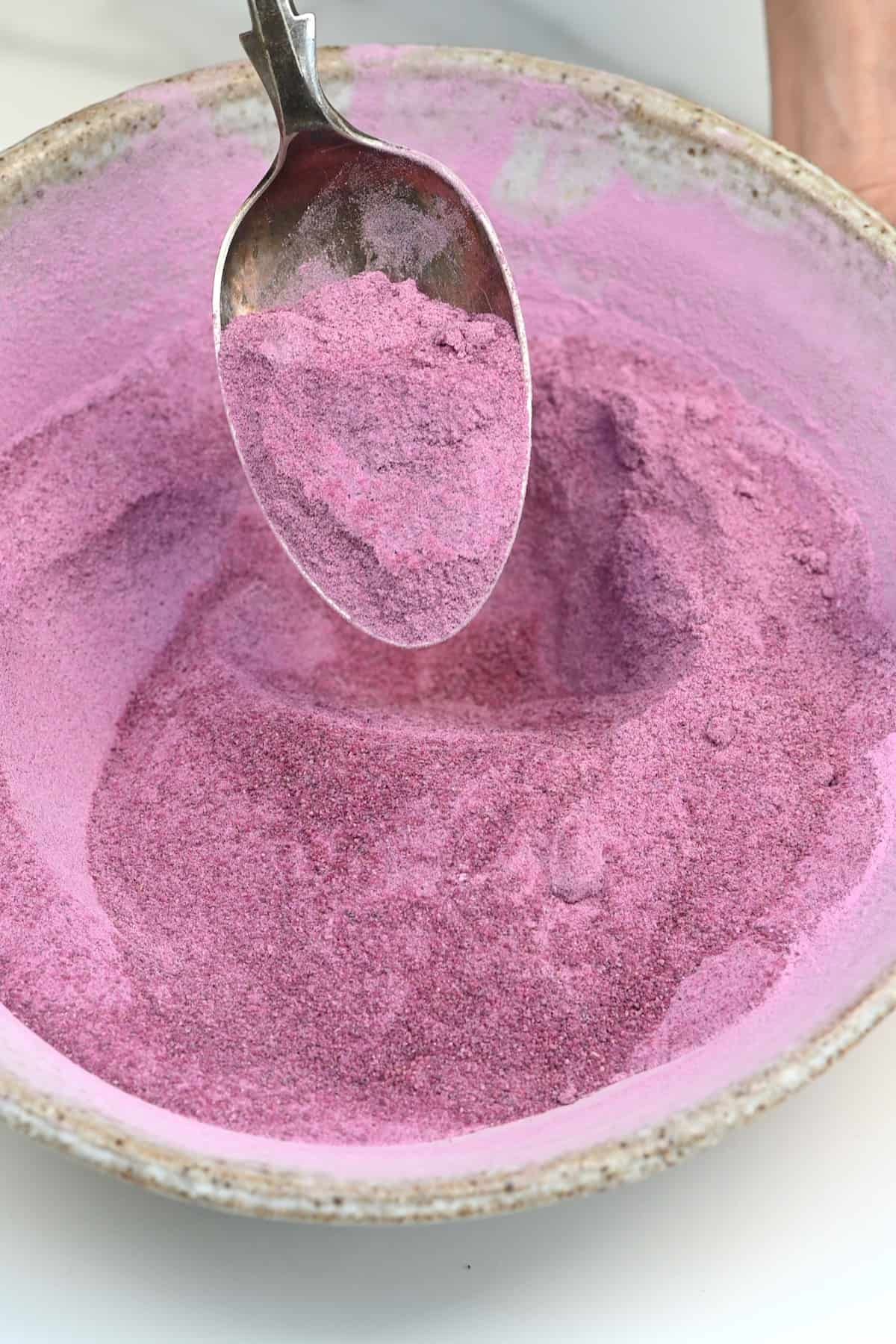
Over two years ago, I decided I wanted to share several homemade natural food colorings and powders after making several naturally colored dishes including this rainbow pasta and rainbow hummus. When I was recently inspired to try out several ube recipes, I thought I could do the whole “two birds, one stone” thing. Within this post, I’ll take you through how to make ube powder and purple sweet potato powder – both of which follow the same method and yield a wonderfully purple powder.
In fact, the versatility (potato, yam, ube) of this method came about as a ‘mistake’ – kind of. I recently went to my local Asian supermarket trying to find ube (first time trying to source it since leaving London!) for this post and ended up with what I’m fairly sure is purple sweet potato. However, the process worked just as well.

This brings me to an important point – finding ube in the US and UK can be tricky. Instead, you may be able to find frozen ube, ube powder, ube jam (halaya), and ube extract – but finding the fresh thing … not so easy.
This is why I always stock up when I do happen to find any. By dehydrating it into a powder, you can store it for months at a time and reconstitute it into ube mash any time you need it for a recipe. Even better, homemade ube powder tastes a thousand times better than the powdered versions I’ve tried!
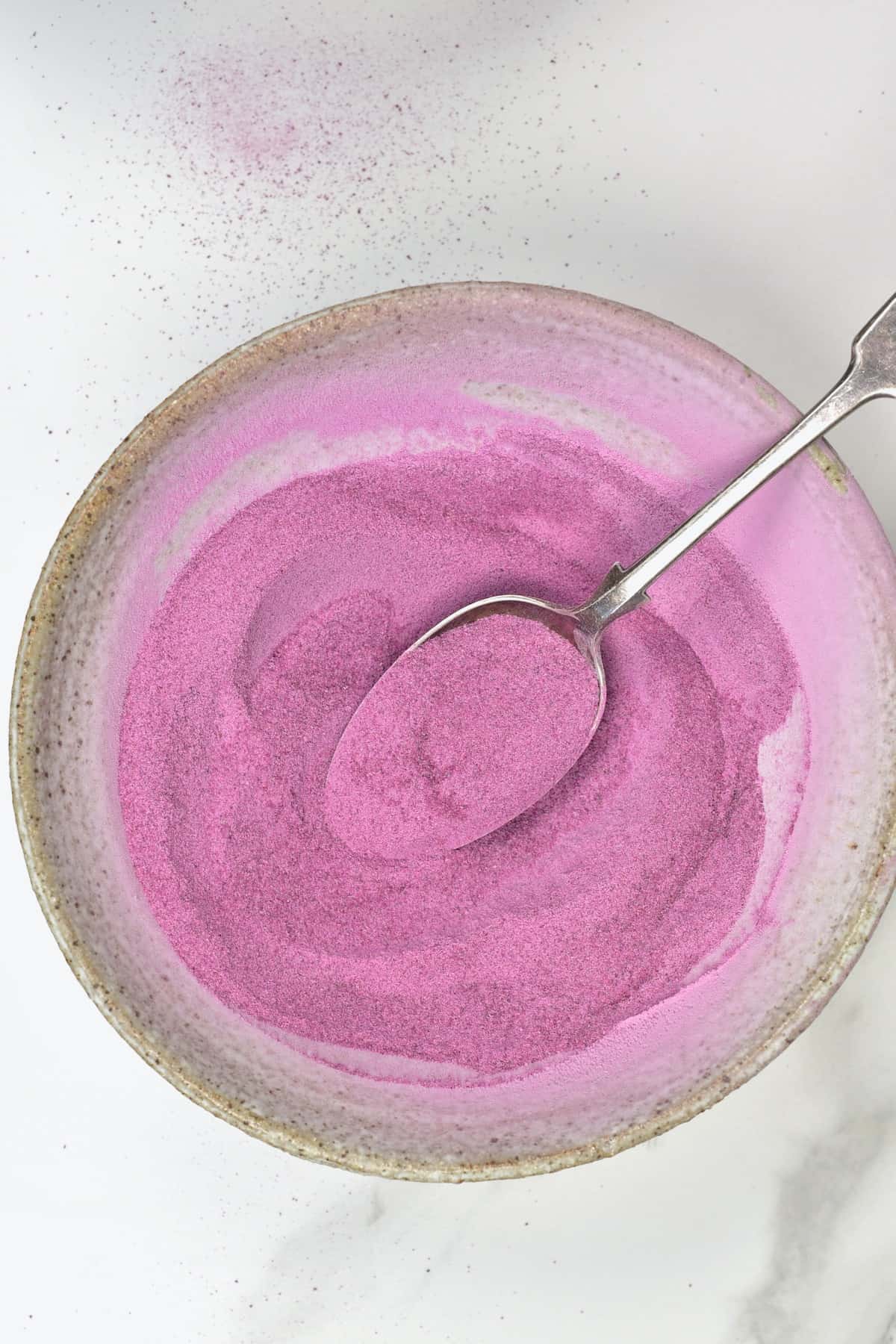
So, using either ube (purple yam) or purple sweet potato still yields a wonderfully purple powder that’s perfect for using as a natural food coloring, too.
Best of all, this process is super simple. All you need to do is cook and dehydrate the ingredient, then crush it into a powder. You don’t even need a dehydrator for this ube powder (though it makes things easier) – you can use an oven too!
Want to save this recipe?
What You’ll Need
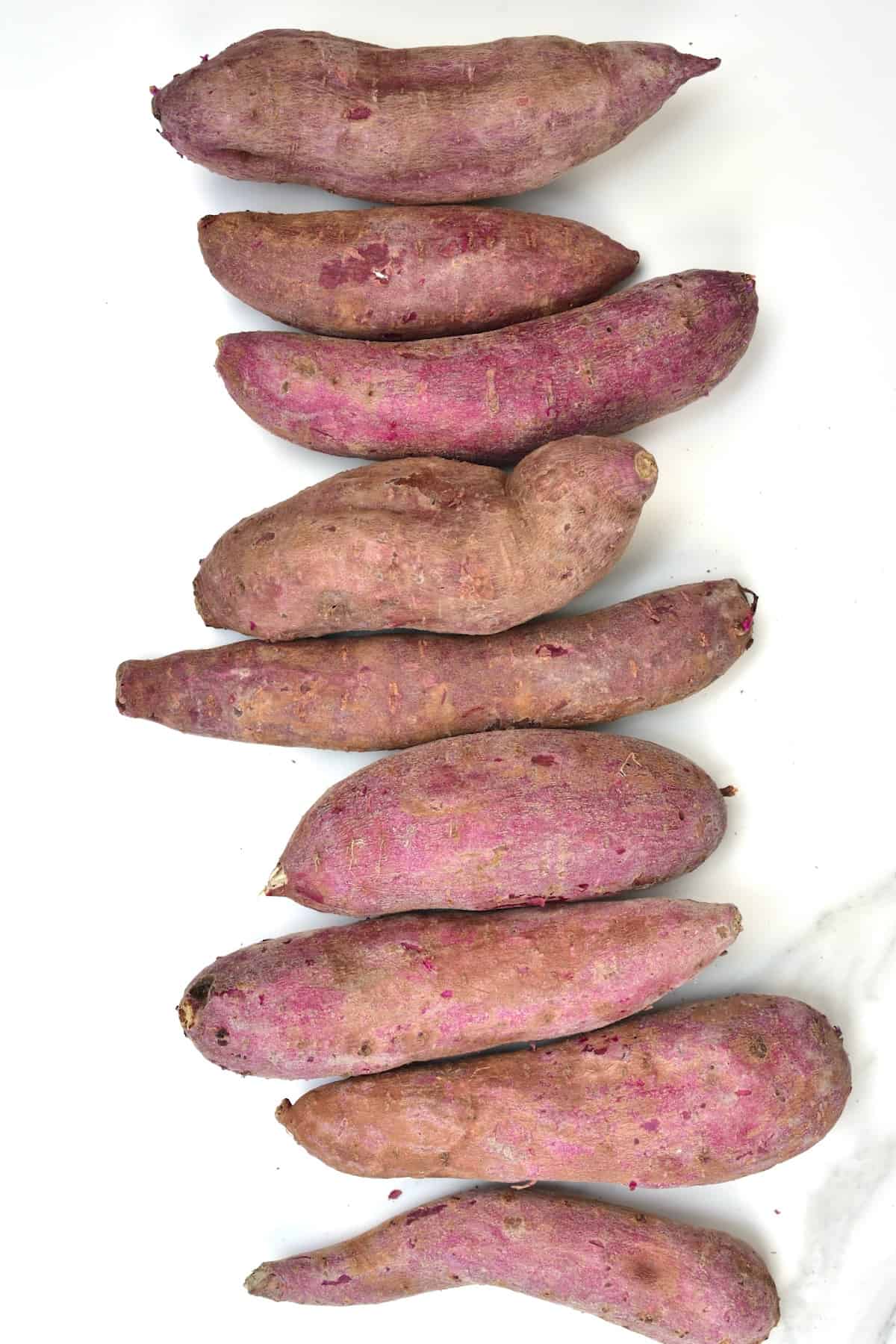
- Purple sweet potato or Ube: this process works with either. If you’re in a country where the ingredients are imported, I recommend using them within a day or two of buying them, so they are at their freshest.
- An oven or dehydrator: the method can be done with either, though I recommend a dehydrator when considering the energy use required to run the oven vs. dehydrator.
How to Make Ube Powder/ Potato Powder
Step 1: Wash and cook the yam/potato
The first step of creating this purple food powder is to cook the yam/potato. This is important so that it can be consumed within raw recipes.
Wash all the yams/potatoes well, and then pat dry and prod each a few times with a fork.
Place them on a parchment-lined baking tray and bake them in the oven for between 40-60 minutes at 475ºF/240ºC or until tender.
The time it takes to thoroughly bake them will depend on their size and exactly what you use (potato vs. ube).

Step 2: Peel and mash them
Once baked, allow the potatoes/yams to cool to the touch and then peel them. This should be fairly easy to do.

Then mash the potatoes with a masher or fork and spread the mash in a thin layer across either a parchment-lined baking tray (for oven dehydrating) or on a liner on a dehydrator tray (for the dehydrator method).
I mashed it straight onto the tray and left it a little chunky. It will likely dehydrate quicker if you mash it more and spread it out evenly in an even thinner layer. Just note that this will affect how much time it takes to fully dry.

Step 3: Dehydrate the ube/ purple sweet potato
In a dehydrator: Dehydrate the mash at 113ºF/45ºC for between 8-12 hours until it snaps rather than bends. I recommend checking on it at 8 hours and increasing, as necessary.
In the oven: If you have an oven that will go as low as 113ºF/45ºC, then perfect! You can follow the same times as above. Alternatively, select the lowest temperature that your oven will go to. Prop the door open slightly with a heat-proof wooden spoon or something similar. Dry for between 4-6 hours, checking on them and increasing as needed. Just be careful that the potato doesn’t burn. If it does, then the heat is too high and/or you need to open the over door more.
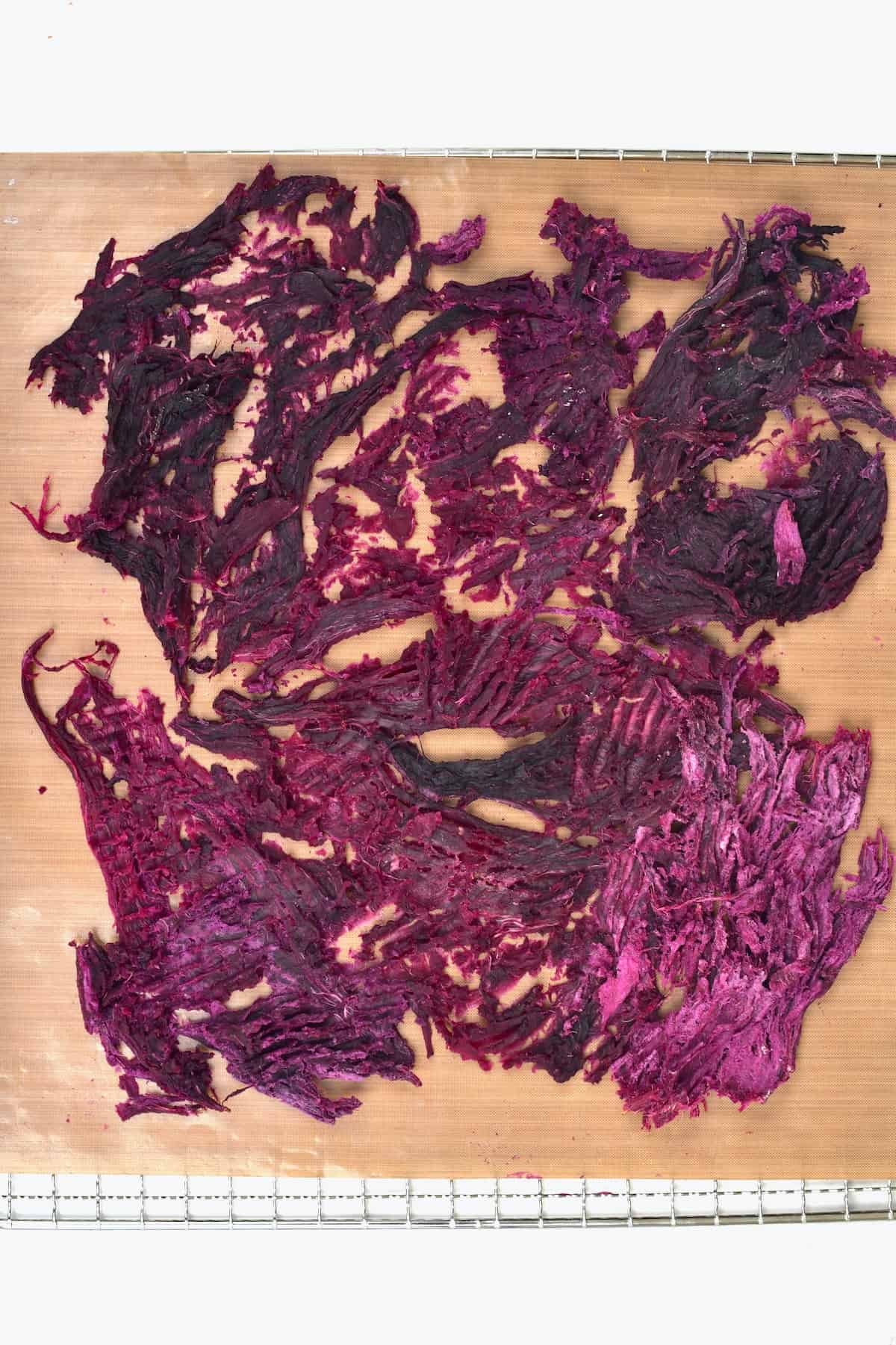
Step 4: grind the powder
Once fully dried (all of it snaps rather than bends), add the dried pieces to an electric coffee/spice grinder. You may need to do this in batches – and then grind it into a powder.
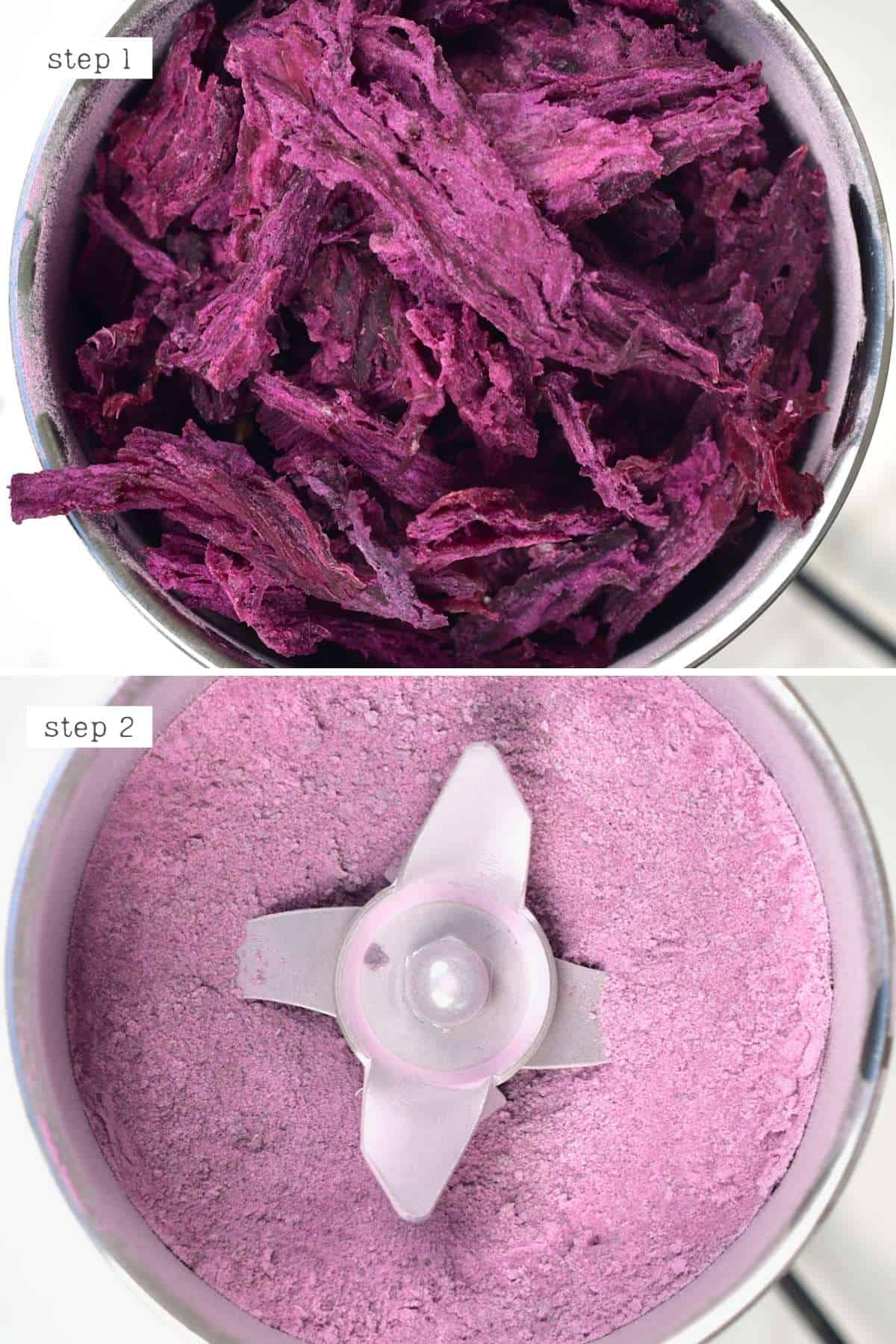
Finally, sieve the purple yam powder, making sure to regrind any of the larger pieces.
It’s essential to make sure that the potato/yam is 100% dry before grinding. Otherwise, you’ll end up with a ‘mash’ rather than a powder.
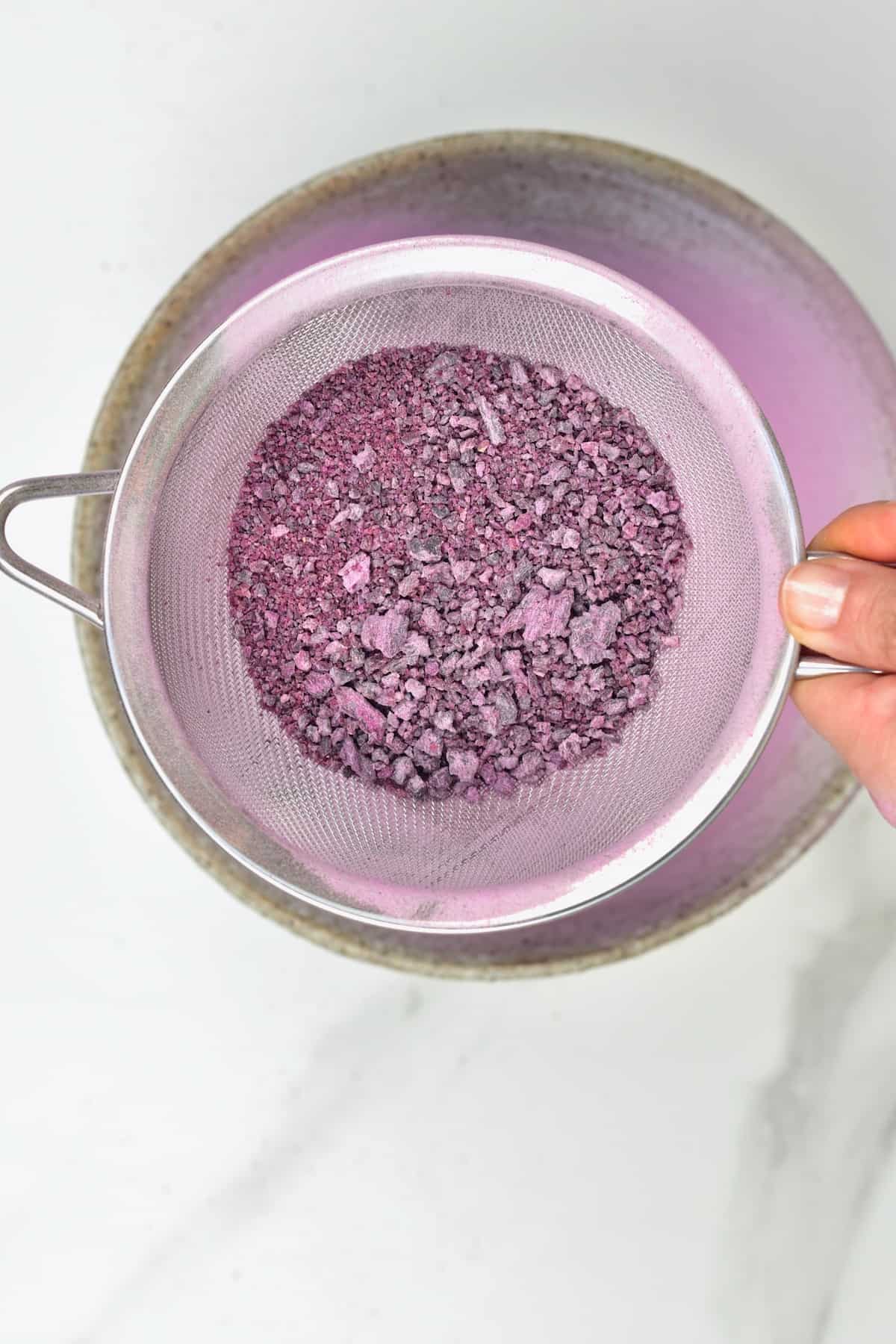
How to Store
Store the ube powder/sweet potato powder in an airtight container for up to 6 months. Alternatively, store the powder in the freezer for up to 12 months.
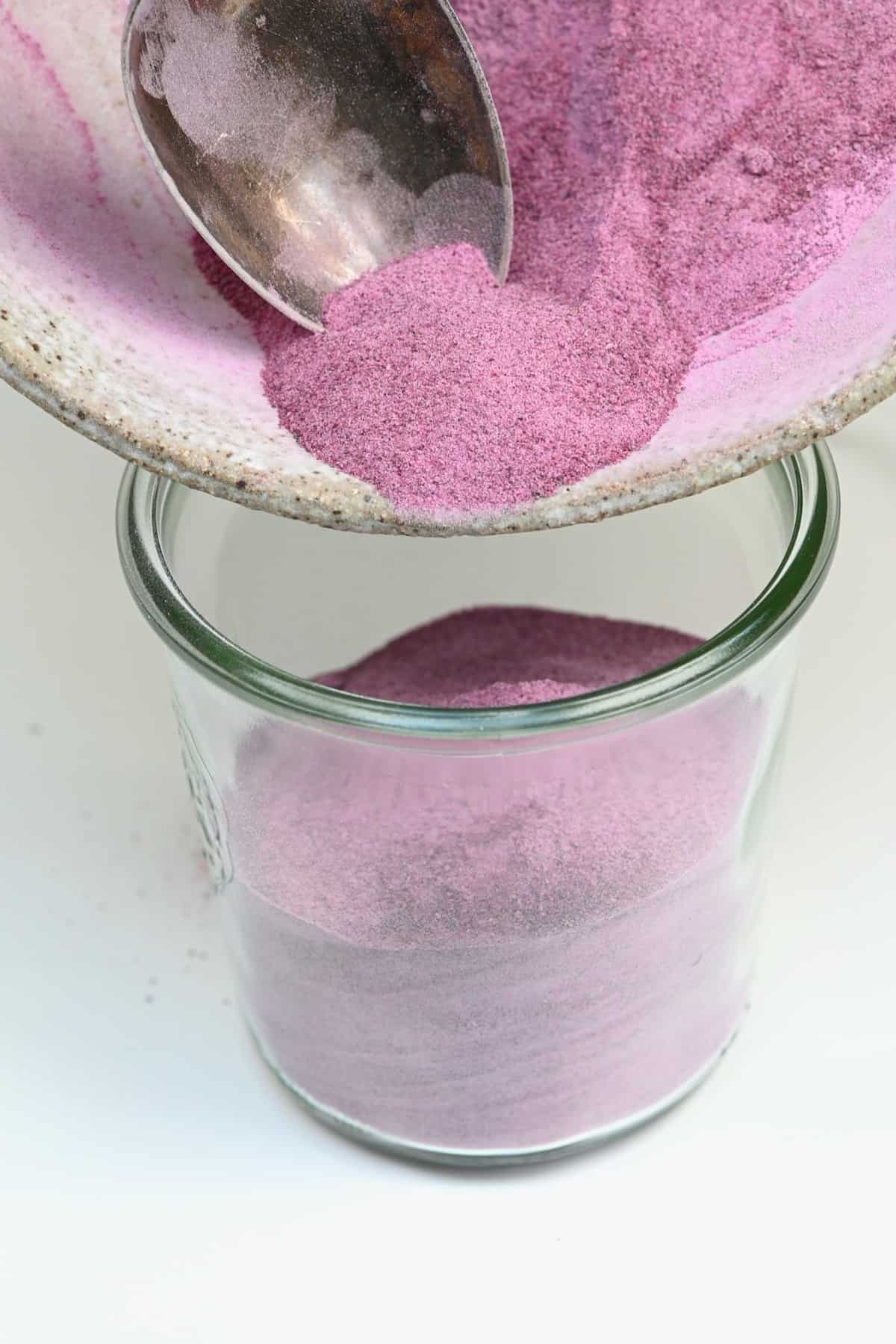
How to use ube powder/purple sweet potato powder?
There are several ways to use the purple potato powder based on your intentions. Obviously, you can rehydrate it (method below). However, you can also use it as a natural food colorant in several ways:
- Mix it into smoothies, white chocolate hot chocolate, ice creams, and doughs (like pasta or bread) to add color without too much impact on flavor.
- Mix it with a bit of molk or water first to implement the color better into the recipe.
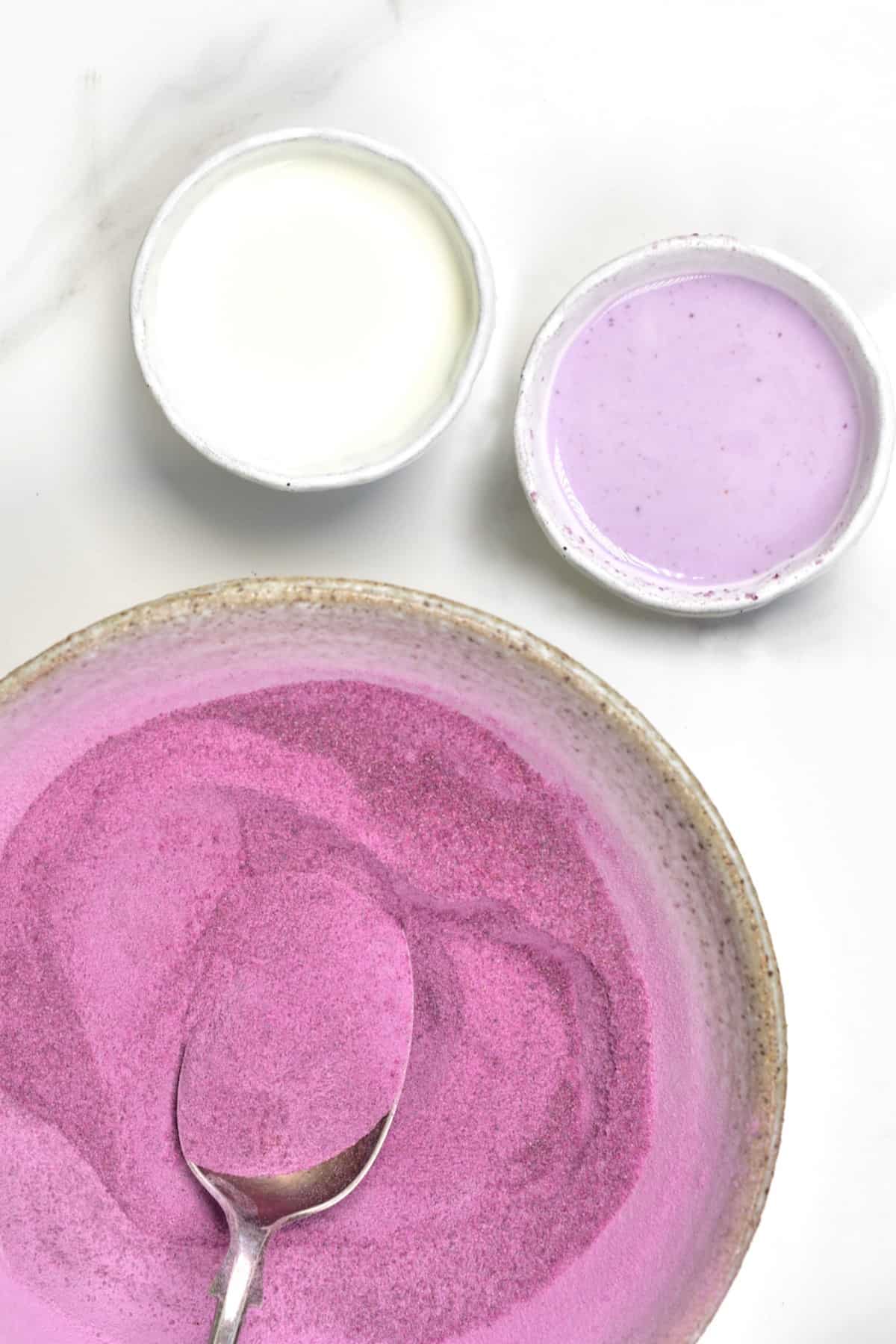
How to rehydrate ube powder?
This process should work the same for ube and purple sweet potato.
Use 2-3 tablespoons powder per ½ cup water. This should yield around 1/3 cup paste.
- In a saucepan, combine the powder and water and heat over medium-high until it comes to a boil.
- Keep cooking and stirring until the powder gets thicker and has absorbed the water.
- Once rehydrated, the ube mash can be allowed to cool and stored in the fridge, covered, for up to a week.
It can be used anywhere freshly cooked ube would be used – cakes, cheesecake, ice-cream, pastillas, cookies, buns, milk tea, and other desserts and dishes.
Note: It’s important to note that in many cases ube paste/powder alone won’t make a very bright purple color. Many recipes call for extra ube extract for more color.
Related DIYs
If you try this method for homemade ube powder or purple sweet potato powder, I’d love to hear your thoughts/questions below. Also, I’d really appreciate a recipe card rating below, and feel free to tag me in your recipe recreations on Instagram @Alphafoodie!

How to Make Ube Powder / Purple Sweet Potato Powder
Equipment
Ingredients
- 2.2 pounds sweet potatoes
This will yield about 9 oz/ 255 gr powder (about 1 cup)
Instructions
Step 1: Wash and cook the yam/potato
- The first step of creating this purple food powder is to cook the yam/potato. This is important so that it can be consumed within raw recipes.Wash all the yams/potatoes well, and then pat dry and prod each a few times with a fork.
- Place them on a parchment-lined baking tray and bake them in the oven for between 40-60 minutes at 475ºF/240ºC or until tender.The time it takes to thoroughly bake them will depend on their size and exactly what you use (potato vs. ube).
Step 2: Peel and mash them
- Once baked, allow the potatoes/yams to cool to the touch and then peel them. This should be fairly easy to do.
- Mash the potatoes with a masher or fork and spread the mash in a thin layer across either a parchment-lined baking tray (for oven dehydrating) or on a liner on a dehydrator tray (to dehydrator method).I mashed it straight onto the tray and left it a little chunky. It will likely dehydrate sooner if you mash it more and spread it in an even thinner layer. Just note that this will affect how much time it takes to fully dry.
Step 3: Dehydrate the ube/ purple sweet potato
- In a dehydrator: Dehydrate the mash at 113ºF/45ºC for between 8-12 hours until it snaps rather than bends. I recommend checking on it at 8 hours and increasing, as necessary.In the oven: If you have an oven that will go as low as 113ºF/45ºC, then perfect! You can follow the same times as above. Alternatively, select the lowest temperature that your oven will go to. Prop the door open slightly with a heat-proof wooden spoon or something similar. Dry for between 4-6 hours, checking on them and increasing as needed. Just be careful that the potato doesn't burn. If it does, then the heat is too high/ you need to open the over door more.
Step 4: grind the powder
- Once fully dried (all of it snaps rather than bends), add the dried pieces to an electric coffee/spice grinder. You may need to do this in batches- and then grind it into a powder.It's essential to make sure that the potato/yam is 100% dry before grinding. Otherwise, you'll end up with a 'mash' rather than a powder.
- Sieve the purple yam powder, making sure to regrind any of the larger pieces.
How to Store
- Store the ube powder/ sweet potato powder in an airtight container for up to 6 months. Alternatively, store the powder in the freezer for up to 12 months.
Notes
Nutrition
Nutrition information is automatically calculated, so should only be used as an approximation.

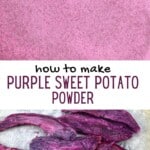
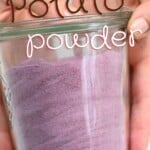
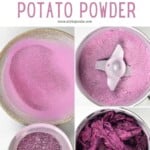



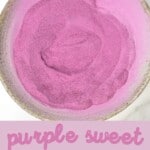











This is great but this adding this to cakes, smoothies, ice cream, etc will not yield an ube-tasting recipe. This is because “ube” desserts, drinks, etc are usually based on the flavour of the traditional Filipino dessert “ube halaya”. Many people use the terms interchangeably. Ube halaya is usually made with ube, condensed milk and coconut milk. To get things to have that characteristic taste of ube recipes, you’d have to mix this with milk and coconut milk and use it in a recipe. Just my two cents.
Thank you so much for the tips, Shalini. Much appreciated.
Thanks for sharing. My oven will only go as low as 200-F
Hi Ann,
You can select the lowest temperature that your oven will go to (200ºF) and then prop the door open slightly with a heat-proof wooden spoon or something similar to allow the air to circulate.